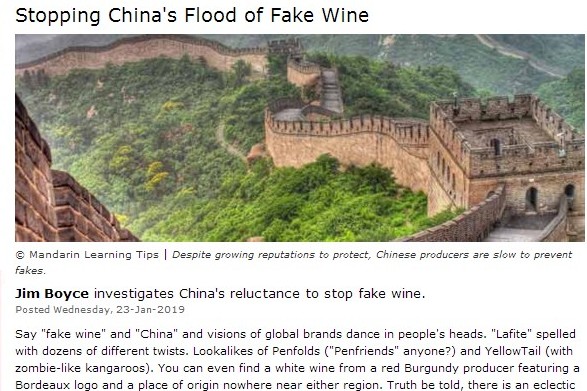“Fake wine” and “China” tend to evoke images of Lafite and Penfolds knockoffs, of labels that borrow a world of spellings and fonts, castles and chateaux. But much less common is recognition that local producers face fakes, too. I recently wrote about this situation for Wine Searcher.
The article looked at major police raids in China, which often find copies of mega-brands such as Changyu and Great Wall. (As one newspaper noted: “At some wineries, CCTV reporters found workers filling hundreds of bottles with bogus wine under the very surveillance cameras supposed to be connected to the country’s quality watchdog agency.”) But small- and medium-sized operations are also at risk. An excerpt from the story:
Hansen is a medium-sized producer focused almost entirely on its home province of Inner Mongolia. Five years ago, chief winemaker Bruno Paumard told me the company introduced bottles embossed with Hansen’s logo to slow down counterfeiters. But slowing is not stopping.
“We regularly find [fake Hansen] in little shops in Inner Mongolia,” he recently said. “They copy the labels and caps and use their own bottles. It’s wine with water; very oxidized and very bad.”
So why isn’t the industry at large doing more to stop this, especially given the authorities are willing to raid? One problem is consumers already lack faith in local wines, without the issue of fakes making it even worse. For more on this, read the full Wine Searcher article here.
Grape Wall has no sponsors of advertisers: if you find the content and projects like World Marselan Day worthwhile, please help cover the costs via PayPal, WeChat or Alipay.
Sign up for the free Grape Wall newsletter here. Follow Grape Wall on LinkedIn, Instagram, Facebook and Twitter. And contact Grape Wall via grapewallofchina (at) gmail.com.
